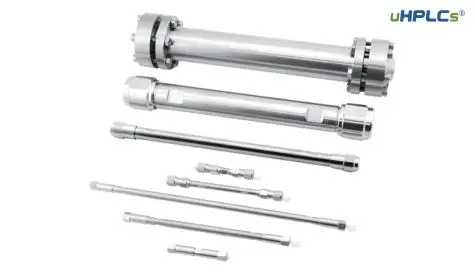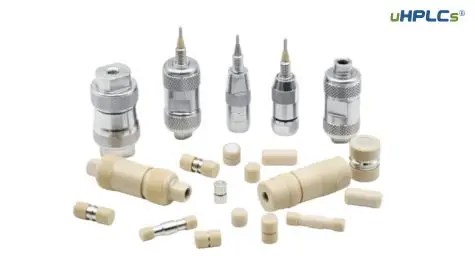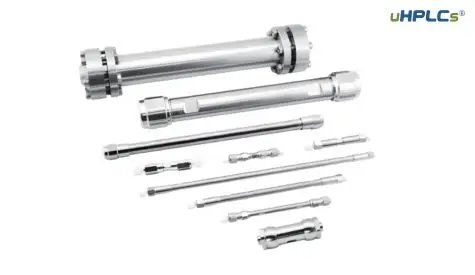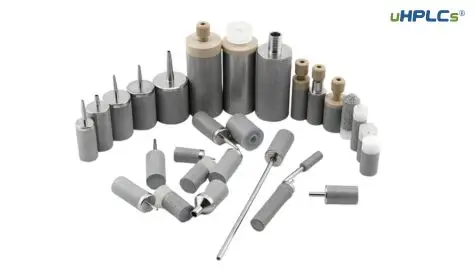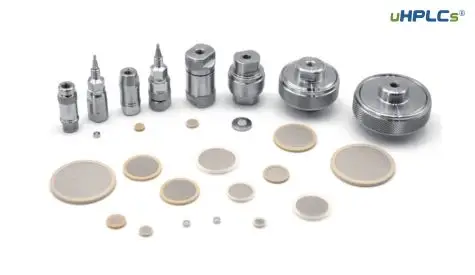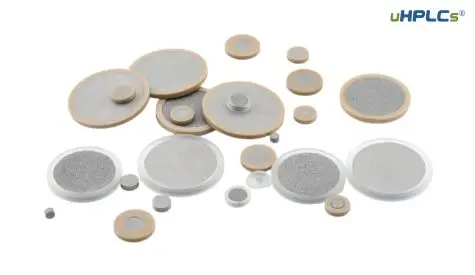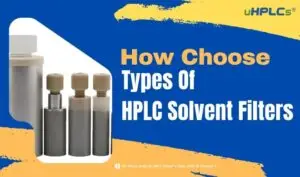In the realm of scientific analysis, high-performance liquid chromatography (HPLC) reigns as a cornerstone technique, empowering researchers and scientists to delve into the intricate composition of complex mixtures. Its versatility and precision have propelled it to the forefront of analytical chemistry, making it an indispensable tool in a diverse array of fields, ranging from pharmaceuticals and biotechnology to environmental monitoring and food safety.
Brief Introduction to HPLC and Its Significance in Scientific Analysis
HPLC is a chromatographic technique that harnesses the power of pressurized liquid mobile phases to separate and quantify components within a sample. This intricate process relies on the interplay between the mobile phase and a stationary phase, typically packed within a column. As the sample is injected into the mobile phase, its components travel through the column at varying speeds, governed by their unique interactions with the stationary phase. By meticulously tailoring the mobile phase composition and column selection, scientists can achieve exquisitely refined separations, enabling them to isolate and identify even the most subtle components within a mixture.
The significance of HPLC in scientific analysis is multifaceted. It offers unparalleled resolution, allowing for the separation of closely related compounds that would otherwise elude detection. Its sensitivity enables the detection and quantification of minute quantities of analytes, making it indispensable in trace analysis. Moreover, HPLC boasts remarkable reproducibility and robustness, ensuring the reliability of results across multiple analyses.
What is HPLC (High Performance Liquid Chromatography)?
Definition and Basic Concept of HPLC
High-performance liquid chromatography (HPLC), formerly known as high-pressure liquid chromatography, is a versatile and powerful analytical technique used to separate, identify, and quantify components in a mixture. It is based on the principle of chromatography, which utilizes the differential affinities of different compounds between two phases: a stationary phase and a mobile phase. In HPLC, the stationary phase is typically a porous material packed inside a column, while the mobile phase is a liquid solvent that flows through the column under high pressure.
As a sample dissolved in the mobile phase is injected into the column, its components interact with the stationary phase to varying degrees. Compounds with stronger interactions with the stationary phase are retained longer in the column, while those with weaker interactions move more quickly. This differential retention allows for the separation of the sample components into distinct bands, which elute from the column at different times.
The eluted bands are then detected by a sensitive detector, such as an ultraviolet (UV) or mass spectrometer (MS). The detector generates a signal that is proportional to the concentration of the analyte, resulting in a chromatogram. The chromatogram is a plot of detector response versus time, with each peak representing an individual component in the sample.
Historical Background and Development of HPLC
The roots of HPLC can be traced back to the early 20th century with the development of adsorption chromatography by Mikhail Tsvet in 1903. However, HPLC as we know it today emerged in the 1960s with the advent of high-pressure pumps and packed columns. These advancements enabled the use of smaller particle sizes in the stationary phase, leading to significantly improved resolution and separation capabilities.
Over the years, HPLC has undergone continuous evolution, with advancements in instrumentation, stationary phases, and detection methods driving its performance and versatility. Today, HPLC is an indispensable tool in a wide range of scientific fields, including pharmaceuticals, biotechnology, environmental science, food science, and clinical chemistry.
The ongoing development of HPLC technologies, such as ultra-high-performance liquid chromatography (UHPLC) and two-dimensional HPLC, promises even further refinement in separation capabilities and sensitivity, ensuring that HPLC remains at the forefront of analytical chemistry for decades to come.
Overview of HPLC and HPLC System
High-performance liquid chromatography (HPLC) is a powerful analytical technique used to separate, identify, and quantify components in a mixture. It is based on the principle of chromatography, which utilizes the differential affinities of different compounds between two phases: a stationary phase and a mobile phase.
General Principles of HPLC
Sample Injection: The sample is dissolved in a suitable solvent and injected into the mobile phase.
Mobile Phase Delivery: A high-pressure pump delivers the mobile phase through the column at a controlled flow rate.
Column Separation: The sample components interact with the stationary phase to different degrees, causing them to travel through the column at different speeds.
Detection: Eluted components are detected by a sensitive detector, such as an ultraviolet (UV) or mass spectrometer (MS).
Chromatogram Generation: The detector generates a signal that is proportional to the concentration of the analyte, resulting in a chromatogram.
Components of an HPLC System
Reservoir: Holds the mobile phase solvent.
Pump: Delivers the mobile phase through the column at a controlled flow rate.
Injector: Introduces the sample into the mobile phase.
Column: Contains the stationary phase, where the separation of components occurs.
Detector: Converts the presence of analytes into a measurable signal.
Data Processor: Records and processes the detector signal, generating a chromatogram.
Functionality of an HPLC System
Sample Preparation: The sample is prepared in a suitable solvent to ensure solubility and prevent interference.
Mobile Phase Selection: The appropriate mobile phase solvent or solvent mixture is chosen based on the properties of the sample components and the desired separation.
Column Selection: The stationary phase material and column dimensions are selected based on the sample characteristics and separation requirements.
Gradient Elution: In gradient elution, the composition of the mobile phase is gradually changed during the separation process to optimize the separation of components.
Detection Method Selection: The appropriate detection method is chosen based on the sensitivity and selectivity required for the specific analytes of interest.
Data Analysis: The chromatogram is analyzed to identify and quantify the components of the sample.
How Does HPLC Work?
High-performance liquid chromatography (HPLC) is a powerful analytical technique that separates, identifies, and quantifies components in a mixture. It is based on the principle of chromatography, which utilizes the differential affinities of different compounds between two phases: a stationary phase and a mobile phase.
Detailed Explanation of the HPLC Process
- Sample Preparation:
The sample preparation process is crucial for successful HPLC analysis. It involves dissolving the sample in an appropriate solvent to ensure solubility and prevent interference from impurities or other components. The sample should be filtered to remove any particulate matter that could clog the column.
- Mobile Phase Delivery:
The mobile phase is the solvent that flows through the column, carrying the sample components. The mobile phase composition is carefully selected based on the properties of the sample components and the desired separation. It typically consists of a mixture of solvents, such as water, acetonitrile, and methanol.
A high-pressure pump delivers the mobile phase through the column at a controlled flow rate. The pressure applied can range from 100 to 500 atmospheres, depending on the type of column and the desired separation. The high pressure ensures efficient flow and maximizes the interaction between the sample components and the stationary phase.
- Sample Injection:
The sample is injected into the mobile phase using an injector. The injector introduces a small, precise volume of the sample into the flowing mobile phase, ensuring that the components are evenly distributed across the column. The injection technique is critical for achieving good separation and peak resolution.
- Column Separation:
The column is the heart of the HPLC system, where the separation of the sample components occurs. The column is packed with a stationary phase, which is a porous material that interacts with the sample components to different degrees. The most common stationary phases are silica-based or polymer-based materials.
As the sample components travel through the column, they interact with the stationary phase based on their chemical properties. Components that have a stronger affinity for the stationary phase will be retained longer in the column, while those with a weaker affinity will elute more quickly. This differential interaction allows for the separation of the sample components into distinct bands.
- Detection:
As the sample components elute from the column, they pass through a detector, which generates a signal proportional to the concentration of the analyte. The detector converts the presence of the analytes into a measurable signal, such as an absorbance signal from an ultraviolet (UV) detector or a mass-to-charge ratio (m/z) signal from a mass spectrometer (MS).
- Data Processing:
The detector signal is recorded by a data processor, which generates a chromatogram. The chromatogram is a plot of detector signal versus time, with each peak representing an individual component in the sample. The peak height or area is proportional to the concentration of the analyte.
Discussion of the Role of Each Component in the Separation Process
Each component of the HPLC system plays a crucial role in the separation process.
Mobile phase: The mobile phase transports the sample components through the column and provides the environment for the separation to occur. The composition of the mobile phase is critical for achieving optimal separation.
Stationary phase: The stationary phase interacts with the sample components to different degrees, causing them to travel through the column at different speeds. The type of stationary phase and the packing material are important factors in determining the separation efficiency.
Column: The column provides a controlled environment for the interaction between the mobile phase and the stationary phase. The column dimensions and packing density affect the separation process.
Injector: The injector introduces the sample into the mobile phase in a controlled manner, ensuring that the components are evenly distributed across the column. The injection volume and technique are critical for achieving good peak resolution.
Detector: The detector converts the presence of the analytes into a measurable signal, which is used to quantify the concentration of each component in the sample. The sensitivity and selectivity of the detector are important factors in determining the detection limits of the analysis.
Data processor: The data processor records and processes the detector signal, generating a chromatogram that provides visual representation of the separation. The data processor can also perform quantitative analysis of the sample components.
Together, these components work in harmony to achieve the separation, identification, and quantification of components in a mixture, making HPLC an invaluable tool in a wide range of scientific disciplines.
Types of HPLC
High-performance liquid chromatography (HPLC) is a versatile analytical technique that employs various methodologies to separate, identify, and quantify components in a mixture. Each HPLC methodology utilizes a specific stationary phase and mobile phase combination to achieve optimal separation for different types of compounds.
1. Normal-Phase HPLC
Normal-phase HPLC, also known as classical HPLC, is a traditional HPLC mode that utilizes a polar stationary phase and a nonpolar mobile phase. The stationary phase is typically silica gel, which has polar functional groups, while the mobile phase is a nonpolar solvent, such as hexane or chloroform.
Description and Applications of Normal-Phase HPLC
Normal-phase HPLC is particularly well-suited for separating compounds based on their polarity. Compounds with higher polarity will interact more strongly with the polar stationary phase and be retained longer in the column, while less polar compounds will elute more quickly.
Applications of normal-phase HPLC include:
Separation of polar compounds: Normal-phase HPLC is effective for separating polar compounds, such as carbohydrates, organic acids, and amino acids.
Purification of natural products: Normal-phase HPLC is often used to purify natural products, such as antibiotics, pigments, and antioxidants.
Key Features and Typical Uses
Polar stationary phase: Silica gel with polar functional groups
Nonpolar mobile phase: Hexane, chloroform, or other nonpolar solvents
Suitable for polar compounds: Carbohydrates, organic acids, amino acids
Applications: Separation of polar compounds, purification of natural products
2. Reversed-Phase HPLC
Reversed-phase HPLC, also known as reversed-phase chromatography (RPC), is the most widely used HPLC mode. It utilizes a nonpolar stationary phase and a polar mobile phase. The stationary phase is typically bonded with hydrocarbon chains, such as C8 or C18, while the mobile phase is a mixture of water and a polar solvent, such as acetonitrile or methanol.
Explanation of Reversed-Phase HPLC
Reversed-phase HPLC is based on the principle of hydrophobic interaction. Nonpolar compounds will interact more strongly with the nonpolar stationary phase and be retained longer in the column, while polar compounds will elute more quickly. This reversed interaction allows for the separation of compounds based on their hydrophobicity.
Advantages and Common Applications
Reversed-phase HPLC offers several advantages over normal-phase HPLC:
Wider range of applicability: Reversed-phase HPLC can separate a wide range of compounds, including polar, nonpolar, and amphoteric compounds.
Higher reproducibility: Reversed-phase HPLC is generally more reproducible than normal-phase HPLC.
Compatibility with aqueous mobile phases: Reversed-phase HPLC can use aqueous mobile phases, which are more compatible with biological samples.
Common applications of reversed-phase HPLC include:
Pharmaceutical analysis: Reversed-phase HPLC is widely used to analyze pharmaceuticals, including drugs, metabolites, and impurities.
Environmental monitoring: Reversed-phase HPLC is used to detect and quantify pollutants in water, soil, and air.
Food analysis: Reversed-phase HPLC is used to analyze food components, additives, and contaminants.
Key Features and Typical Uses
Nonpolar stationary phase: Hydrocarbon-bonded silica gel
Polar mobile phase: Water-acetonitrile or water-methanol mixture
Suitable for a wide range of compounds: Polar, nonpolar, amphoteric compounds
Applications: Pharmaceutical analysis, environmental monitoring, food analysis
The Apparatus of HPLC
Here’s a detailed breakdown of the HPLC apparatus along with the functionality and importance of each part:
| Component | Functionality | Importance |
|---|---|---|
| Reservoir | Holds the mobile phase solvent. | The mobile phase is the liquid that flows through the column and carries the sample components. The mobile phase composition is carefully selected based on the properties of the sample components and the desired separation. |
| Pump | Delivers the mobile phase through the column at a controlled flow rate. | The pump ensures a consistent flow of mobile phase through the column, which is crucial for achieving reproducible separation results. |
| Injector | Introduces the sample into the mobile phase. | The injector injects the sample into the mobile phase in a controlled manner, ensuring that the components are evenly distributed across the column. This is critical for achieving good peak resolution in the chromatogram. |
| Column | Contains the stationary phase, where the separation of components occurs. | The column is the heart of the HPLC system. It is packed with a stationary phase, which is a porous material that interacts with the sample components to different degrees. The type of stationary phase and the packing material are important factors in determining the separation efficiency. |
| Detector | Converts the presence of analytes into a measurable signal. | The detector detects the presence of analytes as they elute from the column and converts it into a measurable signal. The sensitivity and selectivity of the detector are important factors in determining the detection limits of the analysis. |
| Data Processor | Records and processes the detector signal, generating a chromatogram. | The data processor records the detector signal and converts it into a chromatogram, which is a visual representation of the separation. The data processor can also perform quantitative analysis of the sample components. |
I hope this breakdown provides a clear understanding of the HPLC apparatus and the importance of each component. Please let me know if you have any further questions.
HPLC Separation
Separation Process in HPLC
High-performance liquid chromatography (HPLC) is a powerful analytical technique that separates, identifies, and quantifies components in a mixture. The separation process in HPLC is based on the differential affinities of different compounds between two phases: a stationary phase and a mobile phase.
Mobile Phase
The mobile phase is the solvent that flows through the column, carrying the sample components. The mobile phase composition is carefully selected based on the properties of the sample components and the desired separation. It typically consists of a mixture of solvents, such as water, acetonitrile, and methanol.
Stationary Phase
The stationary phase is the porous material packed inside the column. The stationary phase interacts with the sample components to different degrees, causing them to travel through the column at different speeds. The most common stationary phases are silica-based or polymer-based materials.
Separation Mechanism
As the sample components travel through the column, they interact with the stationary phase based on their chemical properties. Components that have a stronger affinity for the stationary phase will be retained longer in the column, while those with a weaker affinity will elute more quickly. This differential interaction allows for the separation of the sample components into distinct bands.
Elution
The process of eluting the sample components from the column is called elution. Elution can be achieved using a variety of techniques, including:
Isocratic elution: The mobile phase composition is kept constant throughout the separation.
Gradient elution: The mobile phase composition is gradually changed during the separation process to optimize the separation of components.
Factors Affecting Separation and Resolution
The separation and resolution of HPLC analysis are influenced by several factors, including:
Mobile phase composition: The composition of the mobile phase is critical for achieving optimal separation. The appropriate solvent mixture and solvent ratios must be selected based on the properties of the sample components.
Stationary phase type: The type of stationary phase and the particle size are important factors in determining the separation efficiency. Different stationary phases have different selectivities for different types of compounds.
Column dimensions: The length and diameter of the column affect the separation process. Longer columns generally provide better separation, while wider columns provide faster flow rates.
Flow rate: The flow rate of the mobile phase affects the separation and resolution. A higher flow rate will result in faster elution of the sample components, but it may also compromise separation.
Sample injection volume: The injection volume of the sample should be carefully controlled to ensure optimal separation and peak resolution. A large injection volume may lead to peak overlap and poor resolution.
Temperature: The temperature of the column can affect the separation process. Generally, higher temperatures will result in faster elution of the sample components, but they may also affect the interaction between the sample components and the stationary phase.
By carefully controlling these factors, scientists can optimize HPLC separation and achieve high levels of resolution, enabling them to separate and identify even the most closely related compounds.
How to Read a Chromatogram
Chromatograms in HPLC
Chromatograms are the visual representations of the separation process in HPLC. They provide a wealth of information about the components present in a sample and their relative concentrations. Understanding how to interpret and read chromatograms is crucial for successful HPLC analysis.
Basic Anatomy of a Chromatogram
A chromatogram consists of two axes:
X-axis (Time): Represents the time it takes for each component to elute from the column.
Y-axis (Detector Response): Represents the intensity of the detector signal, which is proportional to the concentration of the analyte.
Key Elements of a Chromatogram
Baseline: The horizontal line that represents the absence of any detectable signal.
Peaks: Each peak corresponds to an individual component eluting from the column. The height and area of a peak are proportional to the concentration of the analyte.
Retention Time: The time it takes for a peak to reach its maximum height. Retention times are unique for each component and can be used for identification.
Resolution: A measure of how well two peaks are separated. Good resolution is essential for accurate quantification.
Interpreting Chromatograms: A Step-by-Step Guide
Identify the baseline: Locate the horizontal line representing the absence of any detectable signal. This line serves as a reference point for measuring peak heights and areas.
Locate peaks: Identify the peaks that represent the elution of individual components from the column. Peaks can be broad or sharp, depending on the separation efficiency and the properties of the analytes.
Measure retention times: Record the retention time for each peak. Retention time is the time it takes for a peak to reach its maximum height.
Determine peak heights and areas: Measure the height and area of each peak. Peak height is the vertical distance from the baseline to the peak’s maximum point, while peak area is the total area under the curve of the peak.
Identify components: Compare the retention times of the peaks to known retention times of standard compounds. This helps in tentatively identifying the components present in the sample.
Quantify components: Use peak heights or areas to quantify the relative concentrations of the components. Peak area is generally considered a more accurate measure of concentration.
Consider resolution: Evaluate the resolution between peaks to assess the separation efficiency of the HPLC analysis. Poor resolution may indicate overlapping peaks and difficulty in accurate quantification.
Tips for Efficient Chromatogram Interpretation
Use a calibrated detector to ensure accurate and consistent signal measurements.
Employ appropriate data processing software to enhance peak resolution and facilitate data analysis.
Consult reference chromatograms of known compounds to aid in identification and confirmation.
Consider using standard addition methods to accurately quantify components in the sample.
Seek guidance from experienced chromatographers or consult relevant literature for in-depth interpretation of complex chromatograms.
HPLC as a Solution to Efficiency Problems
High-performance liquid chromatography (HPLC) has revolutionized analytical chemistry by addressing efficiency issues that plagued traditional chromatographic techniques. Its ability to achieve rapid, high-resolution separations has made it an indispensable tool in a wide range of scientific fields.
Addressing Efficiency Issues in Analytical Chemistry
Before the advent of HPLC, chromatographic techniques were often time-consuming and inefficient, limiting their applicability in many analytical contexts. HPLC overcame these limitations by introducing several key advancements:
High-pressure pumps: The use of high-pressure pumps enabled the use of smaller particle sizes in stationary phases, leading to significantly improved separation capabilities and reduced analysis times.
Efficient columns: HPLC columns are packed with carefully selected stationary phases that provide optimal interaction with the sample components, enhancing separation efficiency.
Sensitive detectors: HPLC employs sensitive detectors, such as ultraviolet (UV) or mass spectrometry (MS), that can detect and quantify minute amounts of analytes, improving the overall sensitivity of the analysis.
Comparison with Other Chromatographic Techniques
HPLC stands out from other chromatographic techniques in several ways:
Resolution: HPLC offers superior resolution, allowing for the separation of closely related compounds that would otherwise elute together in other techniques.
Sensitivity: HPLC is exceptionally sensitive, enabling the detection and quantification of trace amounts of analytes, even in complex mixtures.
Versatility: HPLC can be applied to a wide range of compounds, from small molecules to large biomolecules, making it a versatile tool for various analytical applications.
Reproducibility: HPLC is highly reproducible, providing consistent results across multiple analyses.
Examples of Efficiency Improvements in Analytical Chemistry
Pharmaceutical drug analysis: HPLC has revolutionized pharmaceutical drug analysis, enabling the rapid and accurate determination of active compounds, impurities, and metabolites in drug formulations.
Environmental monitoring: HPLC plays a crucial role in environmental monitoring, facilitating the detection and quantification of pollutants and contaminants in water, soil, and air.
Food safety assessments: HPLC is employed in food safety assessments to detect and quantify harmful residues, additives, and contaminants in food products, ensuring food quality and wholesomeness.
Biochemical research: HPLC is indispensable in biochemical research, providing tools for isolating and purifying proteins, peptides, and other biomolecules, enabling the study of their structure, function, and interactions.
HPLC has addressed efficiency issues in analytical chemistry by providing rapid, high-resolution separations, enhanced sensitivity, and remarkable reproducibility. Its versatility has made it an indispensable tool in a wide range of scientific disciplines, from pharmaceuticals and biotechnology to environmental science and food science. HPLC continues to evolve, with advancements in stationary phases, detection methods, and instrumentation further enhancing its capabilities and expanding its applications.
Conclusion
A variety of scientific disciplines, including pharmaceuticals, biotechnology, environmental science, and food science, rely heavily on HPLC. It has enabled the rapid and accurate determination of active compounds, impurities, and metabolites in drug formulations, the detection and quantification of pollutants and contaminants in water, soil, and air, the detection and quantification of harmful residues, additives, and contaminants in food products, and the isolation and purification of proteins, peptides, and other biomolecules.
HPLC is a constantly evolving tool, with improvements in stationary phases, detection methods, and instrumentation expanding its capabilities and applications. HPLC will continue to be a vital tool in scientific research and analysis for many years to come.
I hope you enjoyed this blog post on HPLC. If you have any questions, please feel free to leave a comment below.
About uHPLCs
UHPLCs is a leading manufacturer of HPLC columns and consumables for liquid chromatography. The company offers a wide range of products, including empty HPLC columns, solvent filters, guard columns, inline HPLC columns, and PEEK consumables. uHPLCs’ products are used in a variety of applications, including pharmaceutical, biotechnology, environmental, and food safety analysis.
UHPLCs is committed to providing high-quality products and services to its customers. The company has a strong team of engineers and scientists who are dedicated to developing innovative products and solutions. uHPLCs also has a global network of distributors and sales representatives who can provide support to customers around the world.
If you are looking for a reliable supplier of HPLC columns and consumables, uHPLCs is the perfect choice. The company’s products are of the highest quality and its services are unmatched in the industry.



